The painter of our final Last Supper was born on 26 October 1935 in a small Italian village called Sant’Antonino just outside Treviso. Renato Casaro had a teacher in his local school who spotted his talent and encouraged it from an early age. The boy carried a notebook with him everywhere and made sketches and caricatures of the people that he saw. His mother frequently scolded him for making drawings in all of his schoolbooks instead of practicing his writing and arithmetic.
But Renato’s greatest passion was the cinema. He watched every new film that came to town, and usually its arrival was announced with a poster. When the film moved on to another town, Renato asked for the poster that had advertised it. He would rush home to get out his pencils and paints to copy it in his bedroom.
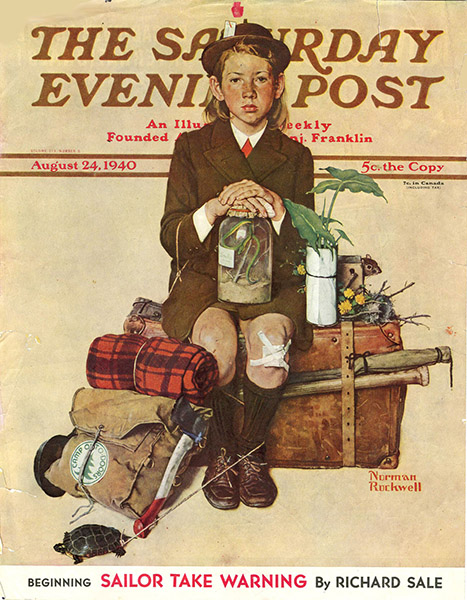
As well as the cenema posters, Renato had another treat which arrived once a week. Somebody in Treviso had ordered the Saturday Evening Post at the newsagent, and Renato eagerly awaited the day when the magazine arrived. Usually, the cover had been illustrated by Norman Rockwell, whose work he worshipped. He copied every piece of advertising artwork he saw, and as he grew and his talents developed, Renato realised that he had gone beyond the abilities of his schoolteachers to teach him and if he wanted to learn more he would have to leave Treviso and go to Rome.
He had become very proficient in technical drawing, and his father was a shipbuilder who understood the kind of drawings that engineers work with. He helped Renato hone his talents in that direction, and things would have gone differently if his father had anything to do with it. Renato could have easily found work at one of the big car plants that were appearing in post-war Italy. His parents wanted him to have a “normal” career despite his yearning for the cinema. A poor compromise was struck, and he went to work for a publicity agency that supplied advertising posters for local producers. His first commission was a painting of a panettone, a kind of Italian Christmas cake.
Each morning, on his way to work, he passed Cinema Garibaldi. The building had an outside wall on which were painted advertisements for the week’s coming film. Renato asked if he could have the job of painting the adverts, and after seeing his work, they told him to start immediately. This was more like it! Among some of his first paintings was Burt Lancaster in Apache, and Marilyn Monroe in River Without Return.
Renato faced his first crisis at the age of 20 when he told his family that he wanted to go to Rome and be a film poster artist. His mother was worried about him living alone in the big city, but he was adamant that this was what he wanted. He gathered all the photographs that he had taken of his cinema paintings and a portfolio of artwork and sent them to Studio Favalli, a famous design and art studio working for the Rome film industry. He was hired, and immediately left his family and set off to Rome. His new employers were pleasantly surprised to find that he was quick to complete projects that were given to him, and for this reason he was given the nickname ‘Renato fa presto’, which translates to ‘does quickly’.
There was a break when he had to do his compulsory 18 months national service, but the Air Force asked him to paint their recruitment posters and provided him with his own studio, so he painted for them during the day and carried on with film posters in the evening. His first big film poster commission came when he was only 25 and it was for The Magnificent Seven.
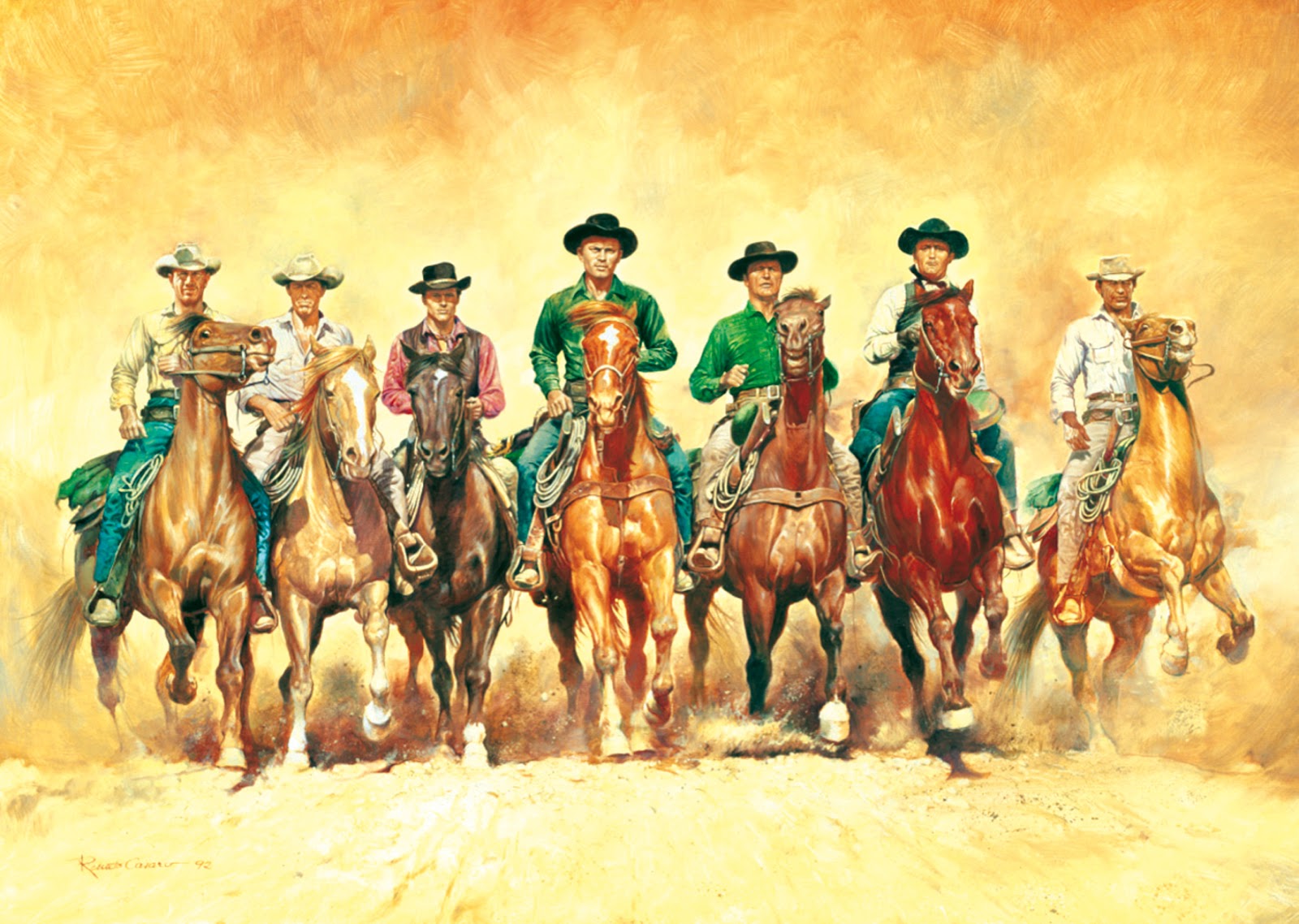
In 1966 he was asked by the Italian producer Dino De Laurentiis to paint the posters for The Bible and this was the first of a long list of posters that he produced for De Laurentiis.
Some of his artwork during this time include Waterloo, Flash Gordon, Dune, the German version of Dances With Wolves and Conan the Barbarian.
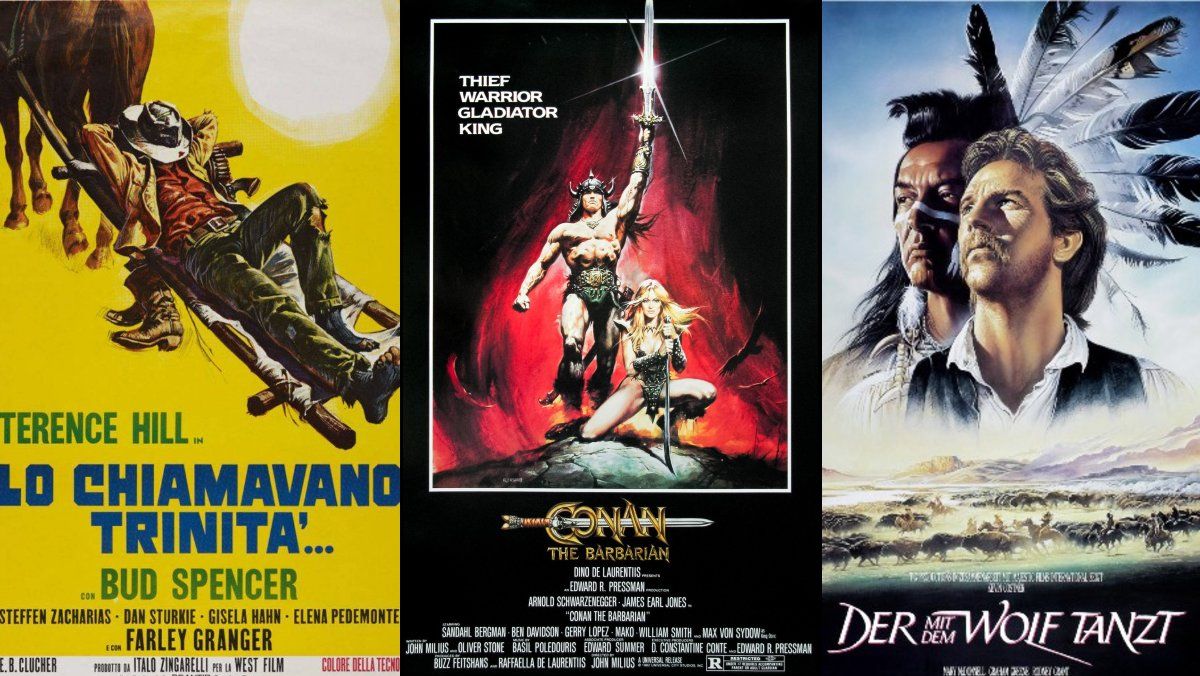
He established his Studio Casaro in Rome, and by the beginning of the 70’s he was taking on work from many different studios in Europe. Some of his older rivals were retiring, but Renato was still developing his techniques, and it was around this time that he began to use an airbrush for his artwork. He was singular in that he always had the say in how or what he painted for a poster, but the directors were always happy with the results. Renato was soon working on worldwide marketing campaigns for numerous films in America, Germany, the UK, France, Japan and many other countries.
One of his most memorable trips was to Tabernas in Almeria, Spain, for the Dino De Laurentiis production of Conan the Barbarian. It was around 1979 when he met Arnold Schwarzenegger on the set of Conan in Almeria at a time when no one knew who he was. He was famous in weight training circles, but all they knew him for was that he had this very impressive powerful body. Of course, nobody working on the film had any idea how famous he would eventually become. Renato was also shown around the Western area of the set at Tabernas and he was very impressed by the faithful reproduction of the set. It was like a piece of old America had been reconstructed in Spain. He had just missed the start of another superstar’s career which began at Tabernas in 1965 when Clint Eastwood filmed A Fistfull of Dollars there. Sandro Symeoni had painted the original Italian poster for the film, but Eastwood was an unknown at the time and he was badly painted in the poster. When the film was re-released in Germany at the end of the 1970s, Leone asked Renato to make sure this poster had a good likeness of Clint. However, Rene did paint the poster for Bad Man’s River starring Lee Van Cleef in 1971.
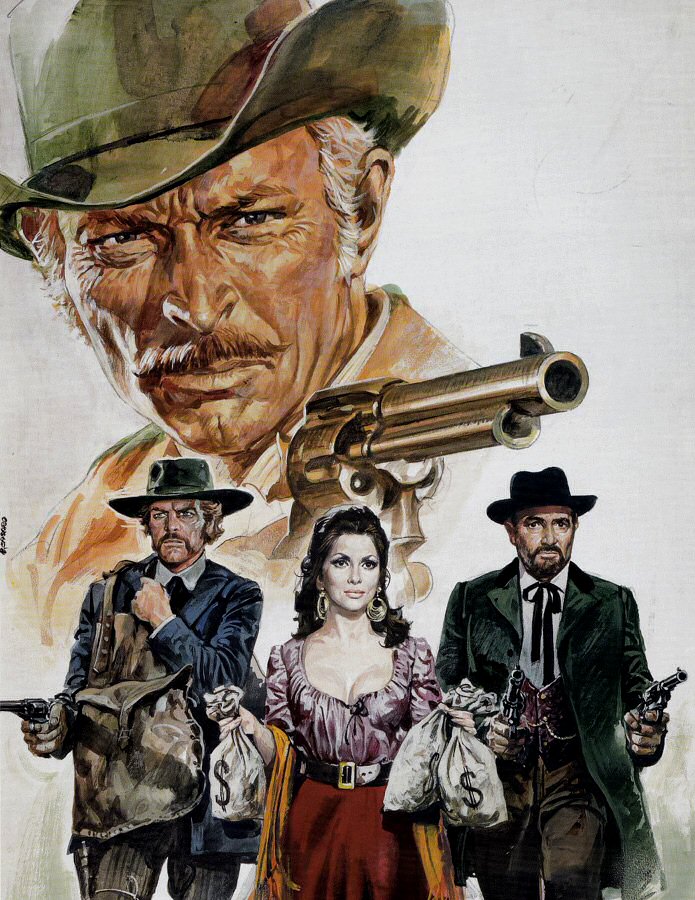
The light and ambience at Tabernas fascinated him and he promised himself that he would return someday. Unfortunately, the next few years saw him working seven days a week producing artwork. The Studio Casaro in Rome was working flat out now, but the long punishing hours that he worked took a toll on his marriage, and he and his wife decided to divorce.
After marrying his second wife, Gabriele, they moved to Munich for a while and worked for the German film industry. There was a dearth of good poster painters here during the 80’s, and for a while he had pick of the market. But times were changing, and he could see the end of his career as a film poster painter. Many of the new films were computer generated, and so were the posters. The last poster he did was for the film Asterix and Obelix vs Caesar in 1999.
That was when he started working on a new series of paintings depicting film stars, which he called Painted Movies. Renato explained, “It was a great feeling to be able to work on an image of these actors I admired without having the pressure of a delivery deadline. I was free to choose the way they were depicted, and I had a lot of fun doing it.” He decided that it was time to return to Spain. He had a house built in Málaga, and opened a studio and gallery at Puerto Banus. From then on, he and his wife decided to live and work in Spain.
It was no coincidence that he chose Puerto Banus to have his gallery. Sean Connery and many of the other film stars that he painted owned houses in the complex around the port, and some had their private yachts in the marina there, too. In the early years of Puerto Banus, the list of film stars who holidayed there was impressive. Ava Gardner, Grace Kelly, Audrey Hepburn, Cary Grant and Laurence Olivier, all visited the Marbella Club, making it the Costa del Sol's first luxury hotel. The prospects of selling his paintings here were obvious. Many of the Painted Movies are of films that he would have liked to work on, films that he saw as a young boy, or films that others painted the posters for. His main theme was cinema, and once he was free of production constraints he could let his imagination roam.
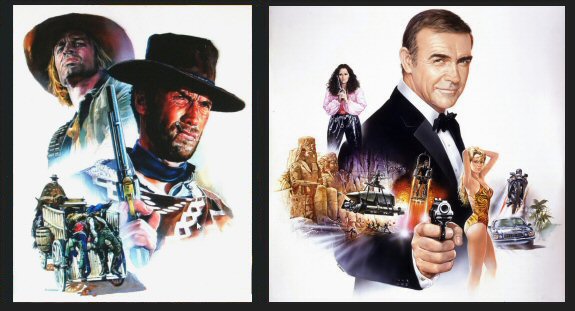
Renato has also painted a new range of pictures themed on the Islamic occupation of Andalucia, no doubt to woo some of the Saudi royal family who have built houses in Marbella.
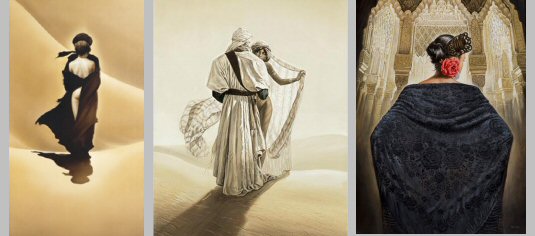
The Saudis are all keen falconers, and Renato painted a series of pictures for them. He has also begun a new series of wildlife paintings which are gaining in popularity.
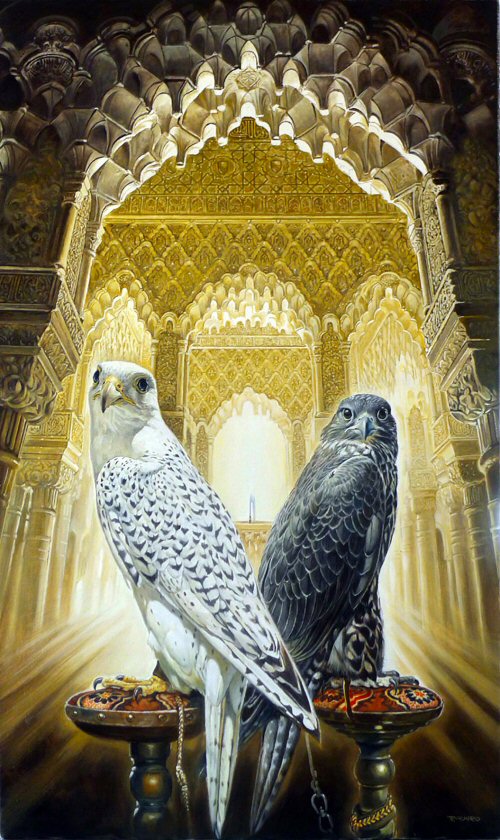
But it is his cinematic Last Supper in the style of Da Vinci that has set the tone for Renato’s light hearted look at Hollywood.
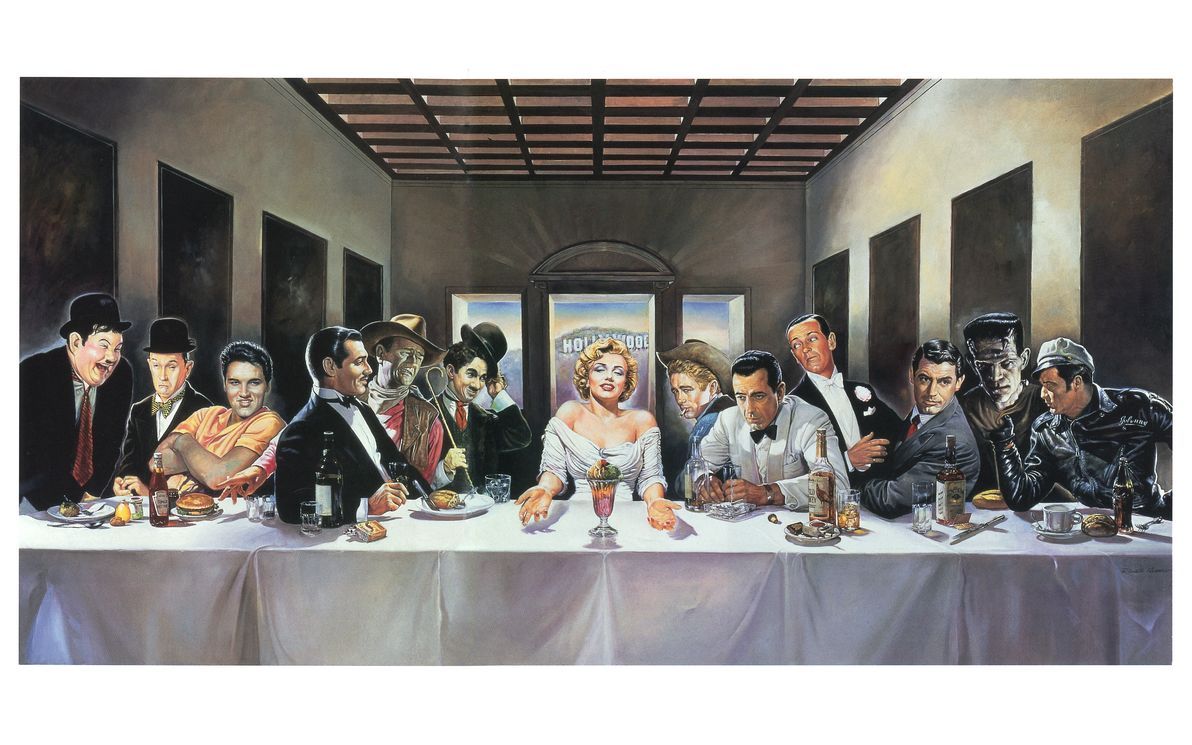
He follows up this with A Break in Filming, a parody of the famous photograph of steelworkers taking their break above New York.
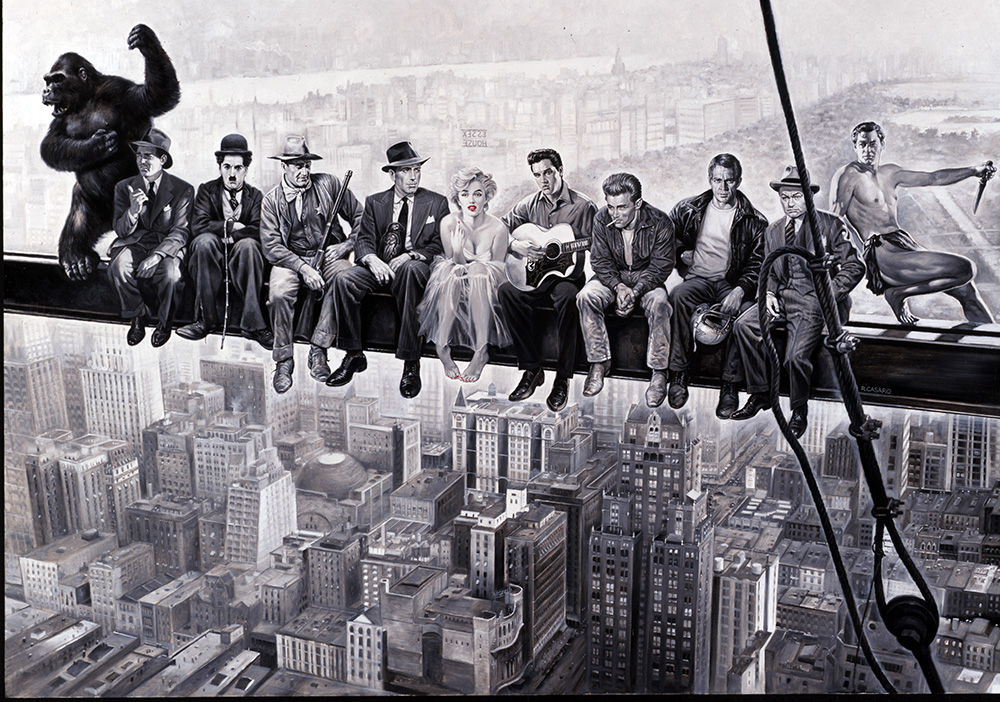
When the lockdown is over, and we can move about again, why not visit Renato’s gallery in Marbella. For most of you guys it is just a couple of hours down the AP7. The address is on the internet. I never got to see it when I lived in Spain because I simply did not know about Renato, but when things are safer, I am going there.
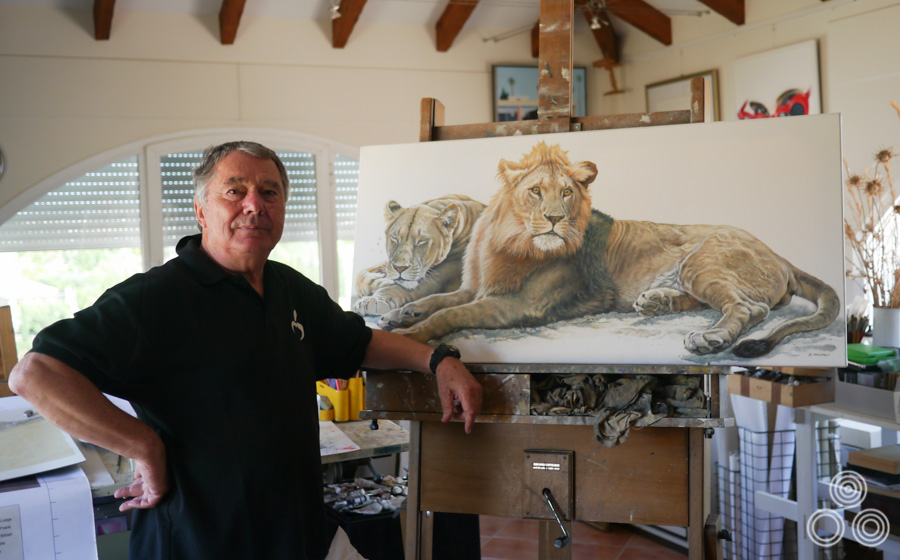
I also want to visit Madrid again because I never got round to visiting the gallery of Joaquin Sorolla, one of Spain’s greatest painters (In my humble opinion). Also, I would like to visit Gaudi’s houses in Barcelona and see the Sagrada Familia again. In England, I am going to make the pilgrimage to see Giampietrino’s Last Supper in the Magdalen College, Oxford. For those of you who have moved to Spain, don’t waste the opportunity to see its amazing cultural heritage. In the wake of Coronavirus, promise me that you will go and see some of these Last Suppers.